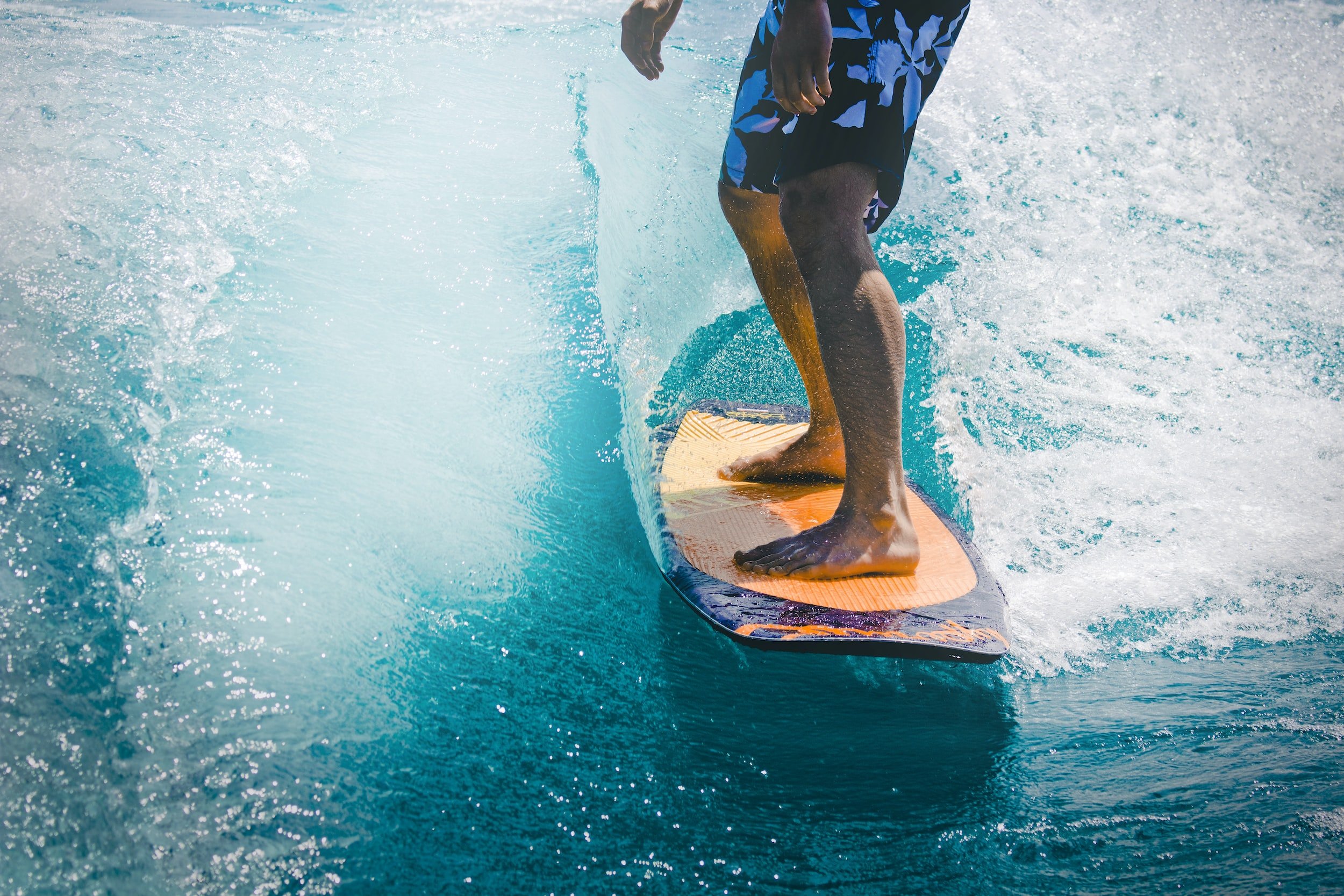The Best Bali Rice Fields to Visit: The Ultimate Guide
Just imagine yourself here: We’ll show you the way in this article…
Introduction
One of the best things about traveling is being able to experience the local cultures and traditions of a place. And there’s no better way to do that in Bali than by observing the rice fields, terraces, and irrigation systems of the island.
Did you know rice fields are considered sacred in Bali? Besides getting a feel of local culture, rice paddies are beautiful spots for photography and provide an escape from the hustle and bustle of city life. In this article, we’ll cover all you need to know about the best rice fields in Bali to visit. We’ll look at their history, how they function today, the best time to visit, and more.
Table of Contents Show
Most popular places to see the best rice fields in Bali
If you're a rice lover or you just love stunning, sculptural landscapes, then Bali rice paddies are magical places to visit. These rice fields are spread across the island and are filled with beautiful rice paddies, fields, and terraces in various shapes and sizes. The terraces and fields in Bali are known for their aesthetic beauty, which is why they’re often used as filming locations for movies and television shows.
There are, of course, famous locations on Bali that see thousands of tourists visiting. We'll cover these in our article.
But we will also share with you some of the lesser-known rice fields of Bali so you can escape the tourist crowds and experience the landscape as if you were a Balinese rice farmer - enjoying the peace, calm and tranquility of these handcrafted agricultural wonders.
Tips for Bali rice fields day trips
Bring water, sunscreen and a hat (ahem!) when you visit Bali’s ricefields
If you’re planning to visit rice fields in Bali, here are a few tips you can follow to make the most of your trip.
Go early in the morning or late afternoon when it’s less crowded and not as hot as the middle of the day. It goes without saying that there is no shade around rice fields, so they can be hot places to visit.
Make sure you bring plenty of water and wear good walking shoes with grip. You may get your feet wet, so be prepared for that. A hat and sunscreen are also a good idea.
Also, be sure to make a donation to the farmers before entering their fields. This will help them keep their fields beautiful and well maintained. This is a nice thing to do even in locations where there is no official fee. Ask permission from any farmer you see to enter the fields and offer them IDR10K or more as a little thank you. If they follow you it is only because they care for your safety and you are there guest on their land.
An example of a Bali rice field temple to make offerings to Dewi Sri, the rice goddess
Did you know? The rice fields in Bali are well-known for their stone carvings, with statues and temples scattered along the roads and in the middle of the fields. These are temples that farmers use to make offerings to the gods. In particular, Dewi Sri, the goddess of rice and fertility, holds a special place in the hearts of the Balinese people who deeply adore her. Given the significant role that rice plays as a staple food in Balinese society, Dewi Sri is worshipped at various sacred locations and honored with a dedicated day each month. She is credited with nourishing the people and providing sustenance for their lives.
History of rice production in Bali
Rice production has been an integral part of the Balinese culture for thousands of years. Indonesia is the third-largest producer of rice in the world, and it is also a staple food in many countries. The rice terraces and fields are synonymous with Bali’s visual identity. The rice fields are terraced in a traditional irrigation system known as 'subak' irrigation, which is a social organization of Balinese people dating back to the 9th century. The subak irrigation system is a sustainable irrigation system that deviates water from rivers and streams to flow through water temples and then into the rice fields.
Understanding the Subak water irrigation system
Maintaining the irrigation channels that flow throughout Bali is a daily chore
The subak water irrigation system is an ancient method of water-management in Bali, dating back to the 9th century. It is a localised version of the agricultural water management system found in many parts of Indonesia. This type of irrigation is a form of local water-harvesting that minimises environmental impact by using resources efficiently and effectively. It also helps farmers manage their water resources and provide good water access to farmers.
The subak system can be characterised by canals and weirs interlaced with irrigation channels that distribute water from natural springs to rice fields. The canals and weirs are managed by representatives of various Balinese communities who jointly discuss subak setup before each rice crop cycle. Every year, farmers meet to discuss subak setup to optimise water sharing and reduce pest volume for rice fields, ensuring high-quality rice harvest every year.
This system unites the natural, spirit, and human worlds in harmony and has played an important role in shaping Balinese agriculture.
It contributes positively to the environment by conserving water, preserving biodiversity, and reducing the use of fertilisers and pesticides. Besides, it provides farmers with reliable access to clean water for rice farming without compromising on productivity or quality.
The subak irrigation system helps farmers harvest a constant supply of water, keep the fields free of weeds and pests, provide water during droughts, and ensure consistent harvests. Apart from cultivating rice on terraces, farmers can also grow other crops like sugarcane, corn, coconuts, juta (coffee), using irrigation water.
The subak irrigation system provides farmers with water in sufficient quantities for consistent harvests and quality crops year after year. It ensures sustainability by ensuring healthy water flows without depleting local water sources.
This system has brought Bali's farmers together to work as one unit towards a common goal - improved agricultural productivity and sustainable agriculture practices. As a result, rice terraces have become part of Bali's cultural heritage and serve as an inspiration for new generations to come.
The complex system of irrigation in Bali is fed by rivers and often passes through water temples on its way to the paddies
Did you know? When the subak irrigation system was being considered for UNESCO listing, the researchers found that even if a computer program were used it could not design a more efficient and equitable distribution of the water resource. And that is amazing considering the system was built from cooperation and negotiation over many centuries.
It happens late at night: All over the island, where subak water channels intersect there is an exchange and the local villages each have a subak 'head' who meets with neighbouring Subak heads to decide on the distribution of water for the next days. This ensures equitable distribution and is based on rains and local water flows and the needs of each paddy area in terms of harvest and growing cycle. These meetings to divert water often happen in the evening by moonlight and the Subak representatives can be heard talking animatedly as they decide on distribution. If you get out of the tourist areas and stay in local homestays or rent a private villa in a rural area you may get to experience this unique exchange.
If you want to explore the Subak system in detail, we can highly recommend the Subak Museum dedicated to documenting this extraordinary example of human cooperation.
Subak Museum: Address: Jl. Gatot Subroto Sanggulan, Tabanan, Bali, Indonesia (See on Google Maps) Open: Monday - Thursday: 8.00 - 16.30 WITA, Friday: 8.00 - 12.30 WITA.
Best time to visit the Bali rice paddies
The best time to visit the rice fields in Bali is during the dry season, from April to November. In this period, fields will be green, vibrant and filled with life.
During the rainy season, from December to March, fields become lush and green but can be a little more challenging to visit - but just be prepared for the possibility of wet feet. It is best to visit rice fields in the early morning when the fields are still filled with Bali's famous golden sunlight. Rice-growing season on the island happens twice a year, so there is always a harvest or new planting to see.
The best Bali rice fields to visit by region
South Bali
If you're looking for a beautiful rice field or terrace to visit on Bali, consider the fields in the southern part of the island. Apart from being beautiful to look at, rice fields and terraces are important parts of local cultures and economies. Even with the advent of tourism (Bali's largest income earner today) the rice fields are critical to economic balance, independence and therefore daily life.
1. Pererenan, Canggu Rice Fields
Pererenan rice field with views of Mount Agung
Pererenan, located just a short drive from Canggu and its beach, is known for its picturesque rice fields and nearby horseback riding tours. Visitors can explore the area's rice fields by walking along Jalan Sempol or Jalan Babadan, which both run through rice paddies. The fields in Pererenan are reminiscent of Ubud's rice fields but with less crowds and a more panoramic scenic beauty, with Mount Agung and Mount Batukaru in the distance. Horse riding tours are popular in Pererenan Beach and neighboring Seseh Beach with their uncrowded black sand beaches.
Address: Munggu, Mengwi, Badung Regency, Bali 80351, Indonesia (See on Google Maps)
Entrance fee: Free
Hours: No set hours
2. Kekeran, Mengwi Rice Fields
Traditional methods of farming continue today in bali rice fields
Kekeran, Mengwi rice fields are located in Southwest Bali and are relatively untouched by tourists. The fields are known for their beautiful terraces and rice paddies that can be seen stretching into the distance.
Our map reference below is to the Pura Dalem (main temple) at Kekeran and you can branch out from there.
Address: C553+94J, Kekeran, Mengwi, Badung Regency, Bali 80351, Indonesia (See on Google Maps)
Entrance fee: Free
Hours: No set hours
3. Jatiluwih Rice Fields (UNESCO listed)
Jatiluwih is one of Bali’s rockstar rice fields
Jatiluwih rice terraces are located in Tabanan Regency, about a 1.5 to 2-hour drive from the Kuta or Ubud. The terraces span over 600 hectares of land, making it one of the world’s largest rice fields. The fields are considered a UNESCO World Heritage site due to their unique geological and cultural heritage. Jatiluwih rice terraces are particularly beautiful with their backdrop of Mount Batukaru.
Visiting Jatiluwih is a highly authentic experience in Bali due to the region’s rural nature. There are several local villages that can be explored in the area, as well as several local restaurants serving Indonesian and local food so you could explore and have lunch for a great 1/2 day or full day trip.
There are four walking (or cycle) trials you can choose to go on:
Red Trail: 1.5 kilometres (1 hour by foot)
Purple Trail: 1.7 kilometres (about 2 hours by foot)
Blue Trail: 3.8 kilometres (about 2 to 3 hours by foot)
Green Trail: 5.5 kilometres (about 4 to 5 hours by foot)
-
Summary
Tabinan Regency in the Central part of Bali is home to the Jatiluwih Rice Terraces, part of the 600 hectare UNESCO World Heritage Site. Due to its complex irrigation system, known as Subak, the location is highly Instagrammable and offers visitors a peaceful spot with panoramic views of the valley.
Highlights
- Bali's largest rice terraces, located in Tabanan Regency
- Complex irrigation system called Subak recognized by UNESCO
- Free parking and 3-4 trails to explore
- Beautiful panoramic views over 600 hectares
- Peaceful and perfect for Instagrammable shots
- Dry season (April - October) and wet season with lush greenery
- Local eateries with Indonesian dishes
Address: Jatiluwih Village, Jl. Jatiluwih Kawan No.Desa, Jatiluwih, Kec. Penebel, Kabupaten Tabanan, Bali 82152, Indonesia (See on Google Maps)
Entrance fee: IDR 40k
Hours: 8.30am-6pm daily
4. Tegallalang Rice Fields, Tegalalang
Tegallalang rice fields near Ubud are a huge drawcard
The Tegallalang Rice Terraces in Ubud, South Bali, are one of the five regions that comprise the UNESCO World Heritage Site listing for the 'subak' irrigation system on Bali. The official title of the listing is "Cultural Landscape of Bali Province: The Subak System as a Manifestation of the Tri Hita Karana Philosophy" (explained below).
Located in the village of Tegallalang, these terraces have been in use for centuries and feature terraces that run parallel to each other and slope up towards road from Ubud to Tampaksiring. Visitors can enjoy the view of the terraces and take stunning photographs at the elevated, breezy roadside viewpoints. You can also explore the terraces by taking the path into the valley. Whilst visiting, you can also have a fun swing adventure and snap your own version of the famous shots you see on social media.
We have a detailed article on the rice fields and also the swing to be found here:
-
The Tri Hita Karana philosophy is a traditional concept in Balinese culture that promotes harmony and balance between human beings, the environment, and the spiritual world.
The term "Tri Hita Karana" comes from three words in the Balinese language: "Tri" means three, "Hita" means happiness, and "Karana" means cause or reason. The philosophy emphasizes that in order to achieve true happiness, one must maintain balance and harmony in these three areas.
The first aspect of the philosophy involves the relationship between human beings and the spiritual world. It emphasizes the importance of maintaining a strong connection with the divine and performing spiritual rituals to honor the gods and ancestors.
The second aspect focuses on the relationship between human beings and the environment. It encourages people to live in harmony with nature and to be mindful of their impact on the environment.
The third aspect highlights the importance of maintaining harmonious relationships within human society. It stresses the need for social harmony and community cooperation to achieve collective well-being.
Overall, the Tri Hita Karana philosophy is deeply ingrained in Balinese culture and influences many aspects of daily life, from traditional ceremonies and rituals to environmental conservation efforts and community building initiatives.
Address: Jl. Raya Tegallalang, Tegallalang, Kec. Tegallalang, Kabupaten Gianyar, Bali 80561, Indonesia (See on Google Maps)
Entrance fee: IDR 10K
Hours: 8am-6pm daily
5. Payangan Rice Fields
The Payangan rice fields near Ubud are very easy to reach
Payangan Rice Fields are located in South Bali, very near to central Ubud, and are a popular destination for travelers. The rice fields are spread out over several hectares and feature lush tropical jungle and rolling hills as part of its landscape. The climate of Payangan Rice Fields is cooler than most other parts of Bali due to its elevation and microclimate. This region offers visitors a unique opportunity to experience the beautiful scenery and culture of Bali from a different perspective. The rice fields at Payangan Rice Fields also boast a diverse range of other plant species, including banana, kesumas, jatropa, cocoa, papaya, pineapple, coconut, jacaranda, teak, and more.
There are several spots to view rice fields in this area. Our map link below is to Kelusa fields but there are others you can explore easily.
Whilst in the area, you might also like to do the Campuhan Ridge Walk.
Address: G7M4+4C9, Kelusa, Payangan, Gianyar Regency, Bali 80561, Indonesia (See on Google Maps)
Entrance fee: Free
Hours: No set hours
East Bali
The rice terraces and fields of East Bali are a prominent feature in the region. They are fields planted with rice that grow in water, known as paddy fields. The terraces are rice paddies, which are flat fields covered with rice plants that grow to a height of about two meters. These terraces and fields are characteristic of traditional agriculture practices in the area, and are best seen during harvest time. The terrace farming method is popular for its environmental and economic benefits, as it can be sustainable and produces high yields. They cover the slopes of hills and mountains, allowing farmers to farm terraces on steep slopes without causing erosion or landslides.
The terraces provide many agricultural benefits such as increased sunlight penetration, improved drainage system, reduced use of pesticides, reduction in water usage, and retention of nutrients within the soil.
6. Sidemen Rice Fields
Sideman is an incredibly beautiful but less-visited area - a great reason to go!
The Sidemen Rice fields are located in East Bali and can be reached from Ubud in about two hours. They are best known for their panoramic views of paddy fields and mountain backdrops, including the active volcano Mount Agung. The fields are not overrun by tourists and provide a unique way to experience true Bali rural life. Visitors are welcome to go to the fields and enjoy the rich biodiversity and local culture.
This is not an official tourist site so you are free to explore at no cost. There are several locations on Google maps - we provide one location but you can explore numerous other vantage points in the area.
Address: GCPM+HPP, Jalan, Sangkan Gn., Kec. Sidemen, Kabupaten Karangasem, Bali 80864, Indonesia (See on Google Maps)
Entrance fee: Free
Hours: No set hours
7. Rendang Rice Fields
You will meet friendly Bali rice farmers who will welcome your visit
The Rendang area near Sideman is renowned for its scenic views of the nearby Mount Agung volcano and beautiful rice terraces. The rice fields offer a tranquil and hassle-free experience and are protected by local laws to ensure their continued sustainability.
This is another rice field area that is not a tourist destination, so there is no set point to visit. Instead, head toward the village of Rendang following our map reference below and then branch out into the rice fields surrounding the village. The wonderful thing about this experience is that you are exploring without other tourists and can really get in touch with the local farmers who are friendly and will welcome your visit.
Address: Menanga, Rendang, Karangasem Regency, Bali, Indonesia (See on Google Maps)
Entrance fee: Free
Hours: No set hours
8. Tirta Gangga Rice Fields
Plan a visit to Tirta Gangga’s rice fields when you visit the Tirta Gangga Water Temple
The Tirta Gangga rice terraces are located in East Bali and are among the most beautiful paddy fields in the area. As visitors explore the terraces, they are often lucky enough to see local farmers working in their fields or grazing their livestock. It is also common to see local children playing on the terraces. Some tours include village-hopping so that visitors can learn about local cultures and traditions firsthand.
Before or after exploring the rice fields you'll want to visit the famous Tirta Gangga Water Palace. The map reference below is to the water palace, and you can branch out and explore the surrounding rice fields from there.
Address: HHQQ+836, Jalan Raya Abang Desa Adat Jl. Raya Tirta Gangga, Ababi, Kec. Abang, Kabupaten Karangasem, Bali 80852, Indonesia (See on Google Maps)
Entrance fee: Free
Hours: No set hours
9. Abang Rice Fields
There is nowhere more tranquil than sitting beside a rice field with a cool drink, counting the dragonflies
The Abang rice fields are located in east Bangli village, near the village of Amlapura. Abang rice fields are best viewed early morning with the backdrop of the Mount Agung and undispersed clouds. The terraces offer a great escape from the hustle and bustle of city life, and are best seen when cloud cover is low and the terraces are visible from afar. Visiting Abang rice fields is an unforgettable experience for those who wish to witness unrivalled views of rice terraces from all directions.
Our map reference below is to the Pura Dalem (main temple) at Abang and you can branch out and explore the surrounding rice fields.
Address: JH5X+GGP, Jl. Ida Kt Djelantik, Abang, Kec. Abang, Kabupaten Karangasem, Bali 80852, Indonesia (See on Google Maps)
Entrance fee: Free
Hours: No set hours
West Bali
Bali is known for its terraces and rice fields, but there are also some beautiful rice terraces in west Bali. The terraces are found in the regency of Gianyar and can be easily reached from Kuta or Seminyak. One can enjoy a scenic drive through rice fields and terraces taking in the beautiful scenery of the regency. These terraces showcase local culture and heritage while providing an ideal setting to indulge in a healthy meal. The terraces are dotted with traditional Balinese houses, water channels, jukung trees, and terrace gardens. Some terraces have water channels leading to rice paddies that provide a soothing view. Apart from visiting on vacation, it is also worth spending time at these terraces if you're interested in local culture and heritage. They are known for their scenic beauty and offer an ideal setting to relax after lunch or dinner.
10. Pupuan Rice Fields
Pupuan rice fields offer inspiration for photography at every turn
Pupuan rice fields in West Bali offer a beautiful and tranquil rural scenery. The village of Pupuan is known for its terraces, orchards, coffee plantations, and groves of rare tropical fruits, such as mangosteen and durian. The fields are filled with farmers growing rice and other crops. The terraces are unique for their carefully laid stones, which create steps that allow water to flow down easily. This creates a beautiful waterfall effect with the rice paddies below. The fields also contain tropical trees, cocoa, and clove plantations. All these make for a unique local environment that can be explored by tourists looking for a tranquil retreat in West Bali.
This is another example of a general area for beautiful rice fields, rather than one specific point, so our map directions below are to the traditional market at Pupuan to get you there and you branch out into the countryside for an exploration to find the many different rice field views. And the traditional market is a great place to get lunch or a drink!
Address: Jl. Gajah Mada No.10, Pupuan, Kec. Pupuan, Kabupaten Tabanan, Bali 82163, Indonesia (See on Google Maps)
Entrance fee: Free
Hours: No set hours
11. Soka Rice Fields
All over Bali you will still see the Bali cow in use tending to the rice fields
Soka rice fields in West Bali are known for their stunning rice terraces and beautiful wild beaches. These rice terraces can be seen from the sea, making them an impressive sight. The rice fields in Soka are planted on low-lying landscape and are located near the coast.
They make for a great day trip or vacation destination if you're looking for a place to visit near the beach. Soka rice fields have been a local attraction for centuries, and they continue to thrive as a local cultural heritage today. If you're visiting West Bali, make sure to check out the rice fields in Soka.
The map link below takes you to Soka beach and from there you can walk into the nearby rice fields.
Address: Jl. Raya Denpasar - Gilimanuk, Antap, Kec. Selemadeg, Kabupaten Tabanan, Bali 82162, Indonesia (See on Google Maps)
Entrance fee: Free
Hours: See on Google Maps
12. Belimbing Rice Terraces
The impossible green of Belimbing rice fields, Bali
The Belimbing rice terraces are located in southwest Bali near Tabanan, around 30 km from the city of Denpasar. The terraces are best visited early in the morning or late in the afternoon, when they are most beautiful. You can also trek through the rice fields and enjoy the unspoiled natural scenery. The terraces of Bali are famous for their scenic beauty and diverse biodiversity, making them a perfect place to visit if you’re looking for some adventure and nature-based activities.
Address: Suradadi, Belimbing Village, Tabanan 82361, Jl. Raya Belimbing, Belimbing, Kec. Pupuan, Kabupaten Tabanan, Bali 82163, Indonesia (See on Google Maps)
Entrance fee: Free
Hours: No set hours
North Bali
North Bali is home to some of the most beautiful and unique rice terraces and fields in the world. For a visit to the terraces and fields, it is best to head to Gianes Village, Karangasem Regency. The rice terraces of this village have been shaped in an elegant fashion that would impress any rice lover. The fields are also full of beautiful colors as they are planted by local farmers using organic fertilizers and pesticides.
13. Munduk Rice Fields
Munduk rice fields by sunset lends a stunning golden hue to the skyline
Munduk rice fields in the northern part of Bali is a unique and off-grid location with cool weather due to its elevation and microclimate. In addition to rice paddies, Munduk is home to a wonderful expanse of rice paddies, particularly around the neighborhoods of Gobleg and Gesing. The fields here produce some of the world's best rice, and are famous among local residents. The fields are a source of livelihood for farmers in this region, as they harvest rice and sell it to local markets or at local farmers' cooperative. The area also benefits from being an important transportation hub, with roads leading north to Singaraja and east to Canggu and south to Jimbaran.
The ricefields are located throughout the Munduk banjar (village area), so our map link is to the traditional market and you can spread out and explore from there. An alternative is to join a tour (including cycling tours) and have a guide escort you.
Address: P3M3+P6C, Munduk, Banjar, Buleleng Regency, Bali 81161, Indonesia (See on Google Maps)
Entrance fee: Free
Hours: No set hours
Conclusion
There are many rice fields and rice terraces in Bali that you can visit and the farmers will generally welcome your visit. Discovering a little about the the subak water irrigation system is the best way to understand how rice terraces were originally built and are maintained in Bali today. A visit to one or more of Bali's rice fields will give you a well-rounded feel for the backbone of Balinese life and culture: the rice harvest.
Frequently Asked Questions
How much do Bali rice fields cost to visit?
A small donation is all you’ll pay to visit Bali’s best rice fields
The cost of visiting the rice fields in Bali can vary depending on how you choose to explore. Some are not tourist destinations and therefore there is no entry fee. Where there is a fee, it is a donation that helps the village maintain pathways and gives a stipend to staff to manage the large volumes of traffic caused by visitors (eg: Tegalalang), and US$1 to $3 is a typical amount. There are a number of organised tours you can join for a day trip of exploring Bali's rice fields. If you want to rent a scooter for the day, then expect to pay between 80,000-100,000 IDR depending on the type of vehicle. For those who prefer more comfort, hiring a private driver for the day can cost around 200,000-600,000 IDR depending on distance and time spent out exploring.
What types of rice are grown in Bali?
Here are some of the different types of rice grown on Bali:
Subak Bali: This is a type of white rice that is grown using traditional Balinese irrigation techniques. Subak Bali rice is considered to be of high quality and is commonly used in Balinese cuisine.
Bali Red Rice: This is a type of whole-grain rice that has a reddish-brown color. Bali Red Rice is high in antioxidants and is known for its nutty flavor.
Black Rice: This is a type of rice that is black in color and is often referred to as "forbidden rice." Black rice is high in fiber and is considered to be a superfood.
Glutinous Rice: This is a type of rice that is sticky and is commonly used in desserts and other sweet dishes. Glutinous rice is also used in traditional Balinese ceremonies.
Are there snakes in Bali rice fields?
Don’t panic - Bali’s snakes are very afraid of tourists!
Yes, there can be snakes in rice fields in Bali. It is best to stay on the main paths when you visit rice fields to avoid any potential encounters with snakes. However, if you do encounter a snake in Bali, keep your distance and respect its space, as they can be dangerous (the thin green ones even frighten the Balinese!). Fortunately, there have been no reports of tourists being bitten by snakes in Bali.
What's the best way to visit rice terraces in Bali, Indonesia?
The best way to see the rice terraces in Bali is by visiting the most popular rice terrace fields at Tegalalang, a UNESCO World Heritage Site. Here you can take a short stroll or navigate its entire length for different vantage points of the terraces. If you're up for more exploration, you can rent a scooter and drive around the Balinese countryside, encountering many rice fields along the way. You can also stop by local villages to learn more about their culture, traditions and local cuisine. No matter what way you prefer exploring them, rice terraces are an unmissable part of your trip to Bali!
What is the famous rice field in Ubud?
The most famous rice field in Ubud is the Tegallalang rice terraces, just north of Ubud. These beautiful terraces are made up of impressively cut out walls from the valley, with up to 10 tiered levels of rice paddies and cascading water.
What is a Bali rice field called by the Balinese?
In Bali, rice fields are called 'sawa'. The sawa terraced rice field system is centuries old, where they build terraces on the hillsides and irrigate them using water from rice fields, canals and rivers managed cooperatively by the 'subak'.

